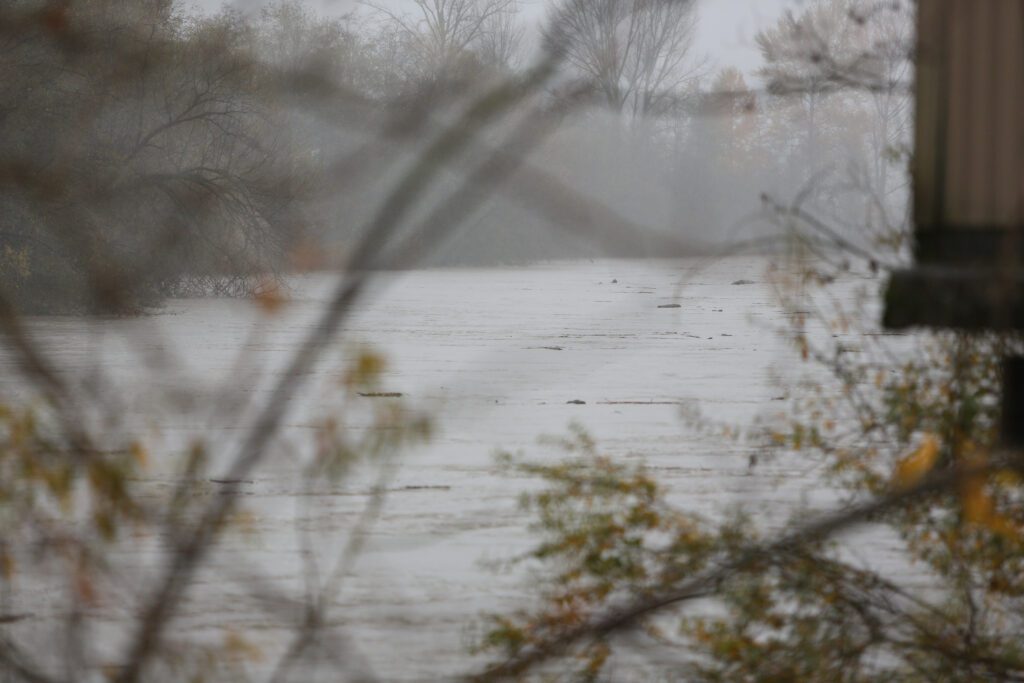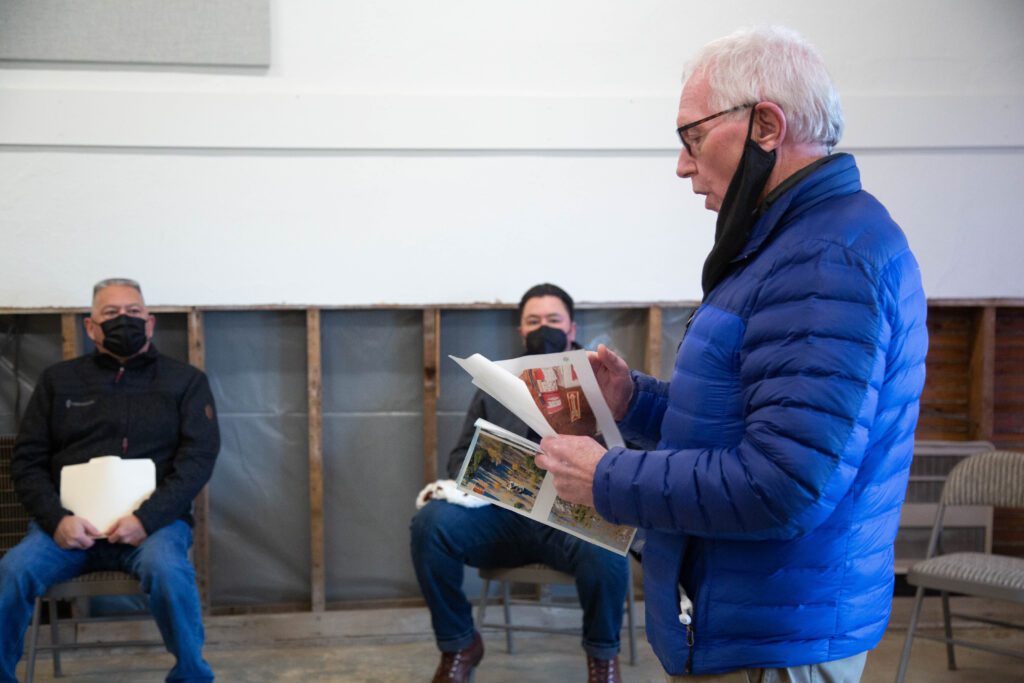SUMAS — President Joe Biden on Friday approved assistance to help repair roads, bridges and other public infrastructure damaged in November after massive flooding in Whatcom County.
The preliminary assessment for public damages in the county was $30.4 million, which was nearly two-thirds of the state’s total loss, said John Gargett of Whatcom County’s Sheriff’s Office of Emergency Management. Biden amended the initial individual assistance declaration to include Whatcom County.
Now that the Biden administration made public assistance funds available, all of the state agencies can provide the federal government with the full damage assessment, which usually exceeds the initial figure.
Gargett said the final amount will probably be $40 million to $50 million.
“We have a long way to go to achieve a full recovery,” Washington Gov. Jay Inslee said in a statement Friday. “It’s going to take time, and a lot of money to get back on our feet.”
Even as public funds become available, the mental anguish lingers for some of the victims such as Melanie Carr, who lost the house that she and her family rented in Sumas because of the water damage.

Carr, 33, lived with her fiancé, three kids and disabled parents. But only her parents were in the two-bedroom, two-bath duplex when the Nooksack River breached its banks. They were unable to leave because of physical disabilities.
Carr recalled how she tried to launch a rescue from a hotel.
“We started to call anybody that we could to try to get somebody to rescue them,” she said. “We called 911, we called my mom’s case managers, we called our realty company, reached out on Facebook, and no one was able to get to them.”
A neighbor with a boat eventually loaded Carr’s parents, Ken and Ethel Markum, onto a tractor to get them to safety.
Firefighters and community members with boats and tractors performed most of the rescues, Sumas Mayor Bruce Bosch said.
“If it wasn’t for those volunteers we would’ve had more injuries and/or fatalities,” he said.
During visits to the border town last week, many buildings appeared to be intact. But most of the interiors of structures were heavily damaged, with water lines still visible from the outside.

The Biden administration announced a disaster declaration on Jan. 5 that made the state eligible for Federal Emergency Management Administration aid, eventually amounting to $2.5 million.
Kyle Christensen, mayor of Sumas at the time of the floods, said individual assistance won’t nearly be enough to cover the losses that people experienced.
“If someone that received flood damage wants to elevate their house, it can cost up to $70,000,” Christensen said. “And we’re talking over 1,200 houses in Whatcom County alone.”
Sumas suffered about 60% of the damages in Whatcom County, Gargett said. Damages to private housing is about $42 million, but it doesn’t take into account all of the losses, he said.
For example, Ethel Markum, 52, lost medical equipment costing tens of thousands of dollars.
“It ruined everything that we have,” Carr said. “It was really difficult to get my mom’s Medicare and Medicaid to cover it the first time so I had to pay out of pocket.”

About 120 displaced people are living in hotels and other temporary housing across Whatcom County, Christensen said. The displaced residents were first placed in farm housing, but as winter approached they had to be moved to different hotels, such as the Super 8 in Ferndale.
“They’re still waiting for repairs to be done. A lot of the sheetrock and heating ducts aren’t ready, the equipment hasn’t come in yet,” Christensen said.
“It’s getting a little bit nerve-wracking because we’re running out of money and we don’t have anywhere else to move into yet.” — Melanie Carr, flood victim
Carr said that she eventually got a grant from Airbnb to stay at an Airbnb in Birch Bay for a month. But the grant money has almost expired.
“It’s getting a little bit nerve-wracking because we’re running out of money and we don’t have anywhere else to move into yet,” she said.
A friend created a Gofundme campaign to try to raise $10,000 for Carr.
FEMA and the U.S. Small Business Administration opened disaster recovery centers in Sumas, Everson and Ferndale. By the end of Monday, only 11 people had applied for assistance at the Advent Christian Church in Sumas, FEMA lead Tiana Suber said. Updated figures were not immediately available.
“It is complicated if you’ve never applied for assistance before but that’s why we’re here in the community,” Suber said. “We’re going to be here as long as needed.”
Even as Sumas is in the midst of recovery, some leaders are contemplating different ways to mitigate future disasters. Bosch said it will take different government agencies working together to manage the Nooksack River so a similar overflow doesn’t happen again.

Bosch said the county doesn’t confer with Sumas on management techniques.
“If they had, we probably wouldn’t be in this situation,” he said. Canada has plans “to put dikes up and whatever it takes to protect their people because we’re not doing it over here.”
Bosch said with so many agencies and jurisdictions involved, including the U.S. Geological Survey and local tribes, one decision to manage the river might harm other stakeholders. For example, placing dikes at the Everson and Sumas overflow would cause more water to go downstream in the event of a flood.
River management alone might not be sufficient to halt future flooding. Managing housing development will be important in guarding against flood disasters if atmospheric rivers become more intense as a result of climate change, said Dave Radabaugh, a floodplain specialist for the Washington Department of Ecology.
“The next thing that you’re going to hope to see in the coming years after this flood is additional resources to elevate buildings,” Radabaugh said.
Radabaugh said floodplain management is about locating areas that are prone to flooding and focusing development on higher ground.

Many buildings that flooded in Sumas were outside of the mapped floodplain when they were constructed, making them substandard for flood protection.
“When bigger floods happened, we didn’t have the density of housing and urban development that exists now,” Gargett said.
Bosch said the rebuilding of Sumas is going to be a slow process as people pay private contractors to repair the damages with the assistance they can get.

Carr said she won’t be moving back.
“It’s been too traumatizing,” she said. “Ever since then, we keep on having nightmares about floods.”
Individuals can find a list of Recover Center locations here or can call 1-800-621-3362 for assistance.




